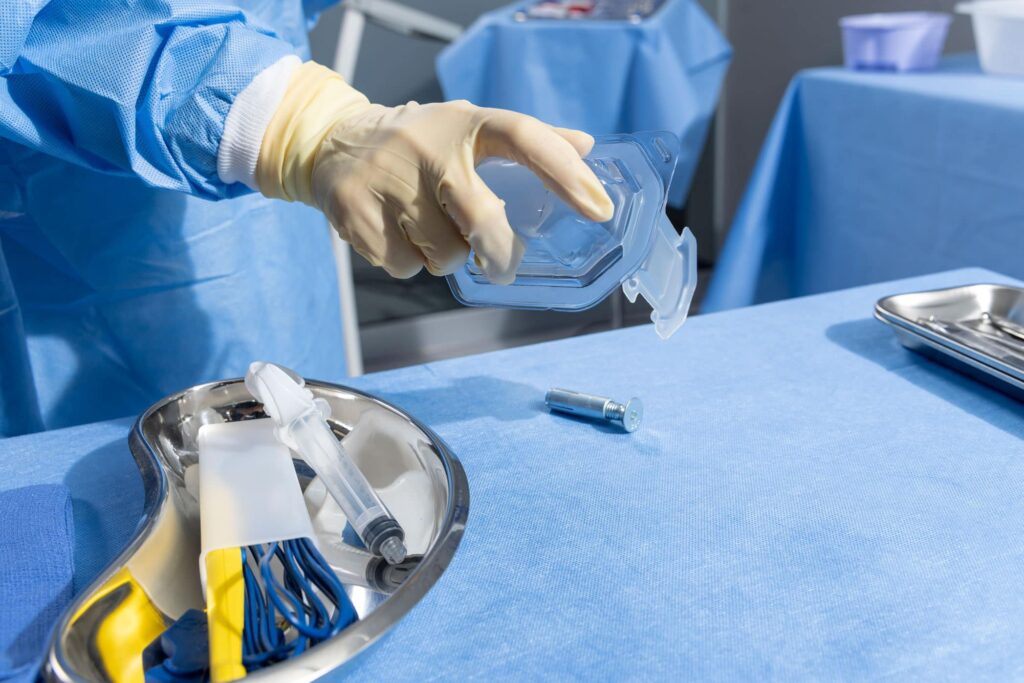

It is an incredible challenge to launch a medical device, whether you are a startup or a global giant. Being a startup adds levels of difficulty as you likely don’t have a large team of subject matter experts and haven’t worked on a product launch before. Many times, start-ups don’t realize they need sterile packaging or that their device must be packaged in a cleanroom until they *think* they’re close to launching. We know what happens next; timelines are pushed, and sales can’t be made which results in sales goals not being met.
To help bridge this gap, we tapped into our network of small to large medical device manufacturers and asked if they’d be willing to offer guidance that could be useful for launching your first (or 50th) medical device!
1. Be Sure You Have a Shared Vision with Your Suppliers
One of the most important things, in the beginning, is making sure there is a shared vision between you and the companies you are partnering with. “Compare the partnership to laying down the foundation of a home or a marriage. You’re likely going to be locked in with this team for years to come, so anything you go through going forward you’ll want to make sure you have that alignment up front,” says Kasey Ross, Sr. Strategic Sourcing Manager at Alpha Tec.
Questions to ask yourself when you’re vetting suppliers to ensure cultural alignment:
- Do they align with your company culturally?
- Do they communicate in the same style?
2. Can Your Packaging Partners Accommodate Your Projected Growth?
If you have an aggressive growth trajectory, then your best option would be to partner with a company that can scale rapidly. If a supplier you’re interviewing is planning on increasing just 5% a year due to whatever constraint, then you’d potentially need to find another partner to fill that gap. “If your growth isn’t aligned then everything else becomes more challenging,” says Vaughn Lorenzo, Director of Quality Engineering at Alpha Tec.
On the other hand, if you only need a thousand finished goods each year you want to make sure you’re still a priority.
Questions to ask to ensure growth alignment:
- Do they measure success and growth in the same way?
- What is their growth trajectory?
- Are they large enough?
- Are they able to accommodate your projected volumes annually?
- Can they scale at the pace you have planned for?
3. Understand the Technical Skills of Partnering Companies
Taking the time to learn about the companies you’re partnering with can help you determine whether they’ll be able to accommodate all your needs or if you’ll need to find another company to fill in. Do you just need packaging engineering and packaging validation? Or do you also need a contract packaging partner too? Do they say they can do it all but outsource their package testing to a 3rd party? A supplier who can be a one-stop shop might be an option your team is looking for. If that’s the case, it’s important to find out what their technical skills and certifications are because your suppliers can make or break your success.
Questions to ask when you’re vetting suppliers to technical alignment:
- What are their technical skills?
- Do they have packaging engineers in-house?
- Which areas do they have subject matter experts?
- What are their capabilities?
- Do they have an ISO 17025 accredited package test lab, or do they outsource testing?
- Do they have an ISO 13485-certified contract packaging facility?
- Are they a leader in purchasing new equipment for production?
- Are they medically focused or do they service various industries (IE: automotive, aerospace, etc.)
4. Be Willing to Deviate from Your Original Plan
Last, but certainly not least is to not be too committed to your plan to the point where you’re not willing to adjust if needed. “There are instances when you’ll need to make compromises to keep pushing your project forward,” says John Dillion, Chief Technology Officer at MOLLI Surgical.
“I never set out to create a medical device,” says Jennifer Hintzsche, Ph.D., CEO & Founder of PherDal, “I was just trying to help people with infertility.” It wasn’t until Hintzsche met with the FDA that she realized what level of packaging was required for their sterile device to be available for sale. “Our plan went from being relatively simple to being more complex than I could’ve imaged. I needed to find compassionate experts to help us guide us but also partner and scale with us for our launch.”
What tips would you suggest to start-up medical device manufacturers when launching their first device? Comment and let us know what you think and let’s create a helpful thread for companies who need assistance!